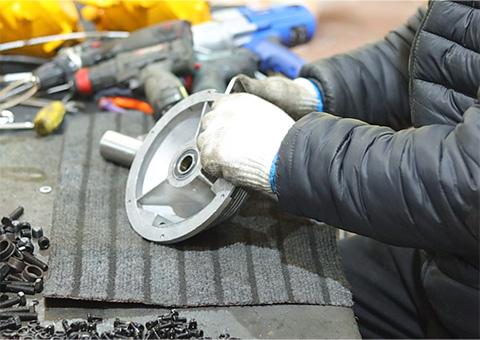double girder bridge crane
Understanding the Double Girder Bridge Crane
The double girder bridge crane is a paramount piece of equipment in the field of material handling. Its design offers several advantages over other types of cranes, making it a preferred choice for various industrial applications. As industries evolve and the demand for efficient material movement increases, understanding the features, benefits, and applications of double girder bridge cranes becomes essential.
At its core, a double girder bridge crane consists of two parallel girders that support the trolley and hoisting mechanism. This configuration allows for greater lifting capacities and spans when compared to single girder cranes. Typically, double girder cranes can lift loads ranging from a few tons to several hundred tons, making them suitable for heavy-duty applications in manufacturing facilities, warehouses, and construction sites.
One of the primary advantages of double girder bridge cranes is their improved stability during operation. The design distributes weight evenly across the girders, minimizing the risk of tipping or swaying. Additionally, the higher hook height provided by the double girder system allows for more efficient use of vertical space, enabling the crane to lift loads higher and clear obstacles easily.
double girder bridge crane

Another significant benefit of using double girder bridge cranes is the ease of adaptability. They can be customized to meet specific operational needs, including modifications for increased lift heights and extended spans. This flexibility makes them ideal for various sectors, including automotive, steel processing, and aerospace industries.
In terms of operation, double girder bridge cranes offer enhanced control and precision. With advanced features such as variable speed drives and remote control systems, operators can handle loads more efficiently, reducing the likelihood of accidents and improving overall workplace safety. The cranes can also be fitted with various attachments, such as magnets or specialized hooks, further expanding their versatility.
Economically, investing in a double girder bridge crane can provide substantial returns over time. While the initial cost may be higher than that of a single girder crane, the long-term efficiency, durability, and capacity can lead to significant savings in operational costs. Maintenance requirements are also manageable, ensuring that the crane remains in peak condition with regular servicing.
In conclusion, the double girder bridge crane serves as a critical asset in modern industrial operations. Its combination of strength, stability, and adaptability not only enhances productivity but also promotes a safer working environment. As industries continue to advance, the importance of such cranes in facilitating efficient material handling will only increase, making them an integral component of any material-handling strategy.
-
Permanent Magnetic LiftersNewsNov.01,2024
-
Operations with an Adjustable CraneNewsNov.01,2024
-
Machine Moving SkatesNewsNov.01,2024
-
Industrial Lifting MagnetsNewsNov.01,2024
-
Effective Machinery MovingNewsNov.01,2024
-
Adjustable Gantry CraneNewsNov.01,2024
-
Unlock the Power of Lifting with Permanent Magnetic LiftersNewsOct.11,2024
